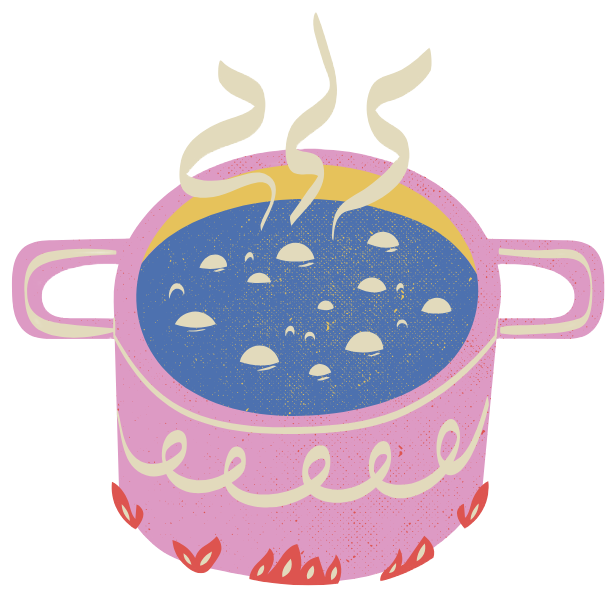How Keen Is Your Rank?
Just the Facts
DOFPro Team

How Keen Is Your Rank? is an episode of the Degrees of Freedom Project, Just the Facts videos on chemical and thermal principles. If you want The Full Story version with an in-depth discussion, use the link in the description. Definitions and additional details can be found in the web-page link in the description as well.
- This Video – How Keen Is Your Rank? explains how to convert temperatures and temperature intervals.
- Another Video – Is Furlongs Per Fortnight a Thing? explains how to convert a measured or calculated quantity from one set of units to another (except for temperatures).
- A Third Video – The Most Annoying Equation Conversion explains how to convert an equation as opposed to a calculated or measured quantity from one set of units to another.
What temperature scales do we use?
\(\bullet\) Kelvin, K
\(\bullet\) Celsius, °C
\(\bullet\) Fahrenheit, °F
\(\bullet\) Rankine, °R
\(\mathbf{-}\) absolute scale (starts at zero)
\(\mathbf{-}\) absolute scale (starts at zero)
\(\mathbf{-}\) used when working with gases in Am. Eng. Units
Temperatures vs. Temperature Intervals
- Temperature: the single temperature of an object
- Temperature interval: the difference between two temperatures


Temperature
\(32\ \mathrm{^\circ F}\)
Temperature
\(212\ \mathrm{^\circ F}\)
Temperature Interval
\(\longleftarrow\ \ 180\ \mathrm{^\circ F}\ \ \longrightarrow\)
Temperature Equations (1/2)
- Celsius to Fahrenheit: \(T(\mathrm{^\circ F}) = \frac{9}{5} T(\mathrm{^\circ C}) + 32\)
- Celsius to Kelvin: \(\ \ \ \ \ \ T(\mathrm{K}) = T(\mathrm{^\circ C}) + 273.15\)
- Celsius to Rankine: \(\ \ \ T(\mathrm{^\circ R}) = \frac{9}{5} T(\mathrm{^\circ C}) + 491.67\)
- Fahrenheit to Celsius: \(\ \ T(\mathrm{^\circ C}) = \frac{5}{9}[T(\mathrm{^\circ F}) - 32]\)
- Fahrenheit to Kelvin: \(\ \ \ T(\mathrm{K}) = \frac{5}{9} [T(\mathrm{^\circ F}) - 32] + 273.15\)
- Fahrenheit -> Rankine: \(T(\mathrm{^\circ R}) = T(\mathrm{^\circ F}) + 459.67\)
Temperature Equations (2/2)
- Kelvin to Fahrenheit: \(T(\mathrm{^\circ F}) = \frac{9}{5} T(\mathrm{K}) - 459.67\)
- Kelvin to Celsius: \(\ \ \ \ \ T(\mathrm{^\circ C}) = T(\mathrm{K}) - 273.15\)
- Kelvin to Rankine: \(\ \ \ \ T(\mathrm{^\circ R}) = \frac{9}{5} T(\mathrm{K})\)
- Rankine to Fahrenheit: \(\ T(\mathrm{^\circ F}) = T(\mathrm{^\circ R}) - 459.67\)
- Rankine to Kelvin: \(\ \ \ \ \ \ \ \ \ T(\mathrm{K}) = \frac{5}{9} T(\mathrm{^\circ R})\)
- Rankine -> Celsius: \(\ \ \ \ \ \ T(\mathrm{^\circ C}) = \frac{5}{9}[T(\mathrm{^\circ R}) - 491.67]\)
Temperature Interval Equations
\(\Delta\)Celsius to \(\Delta\)Fahrenheit: \(\Delta T(\mathrm{^\circ F}) = \frac{9}{5} \Delta T(\mathrm{^\circ C})\)
\(\Delta\)Celsius to \(\Delta\)Kelvin: \(\ \ \ \ \ \ \ \Delta T(\mathrm{K}) = \Delta T(\mathrm{^\circ C})\)
\(\Delta\)Celsius to \(\Delta\)Rankine: \(\ \ \ \ \Delta T(\mathrm{^\circ R}) = \frac{9}{5} \Delta T(\mathrm{^\circ C})\)
\(\Delta\)Fahrenheit to \(\Delta\)Celsius: \(\ \ \Delta T(\mathrm{^\circ C}) = \frac{5}{9} \Delta T(\mathrm{^\circ F})\)
\(\Delta\)Fahrenheit to \(\Delta\)Kelvin: \(\ \ \ \ \Delta T(\mathrm{K}) = \frac{5}{9} \Delta T(\mathrm{^\circ F})\)
\(\Delta\)Fahrenheit to \(\Delta\)Rankine: \(\Delta T(\mathrm{^\circ R}) = \Delta T(\mathrm{^\circ F})\)
\(\Delta\)Kelvin to \(\Delta\)Fahrenheit: \(\Delta T(\mathrm{^\circ F}) = \frac{9}{5} \Delta T(\mathrm{K})\)
\(\Delta\)Kelvin to \(\Delta\)Celsius: \(\ \ \ \ \ \Delta T(\mathrm{^\circ C}) = \Delta T(\mathrm{K})\)
\(\Delta\)Kelvin to \(\Delta\)Rankine: \(\ \ \ \Delta T(\mathrm{^\circ R}) = \frac{9}{5} \Delta T(\mathrm{K})\)
\(\Delta\)Rankine to \(\Delta\)Fahrenheit: \(\Delta T(\mathrm{^\circ F}) = \Delta T(\mathrm{^\circ R})\)
\(\Delta\)Rankine to \(\Delta\)Kelvin: \(\ \ \ \ \ \ \ \Delta T(\mathrm{K}) = \frac{5}{9} \Delta T(\mathrm{^\circ R})\)
\(\Delta\)Rankine to \(\Delta\)Celsius: \(\ \ \ \ \ \Delta T(\mathrm{^\circ C}) = \frac{5}{9} \Delta T(\mathrm{^\circ R})\)
Example 1 - Temperature (1/2)
Convert \(5\ \mathrm{^\circ C}\) into Kelvin, Fahrenheit, and Rankine.
- \(5\ \mathrm{^\circ C} \implies ?\ \mathrm{K}\)
- Remember: \(T(\mathrm{K}) = T(\mathrm{^\circ C}) + 273.15\)
- \(\implies T(\mathrm{K}) = 5\ \mathrm{^\circ C} + 273.15= 278.15\ \mathrm{K}\)
- \(5\ \mathrm{^\circ C} \implies ?\ \mathrm{^\circ F}\)
- Remember: \(T(\mathrm{^\circ F}) = \frac{9}{5} T(\mathrm{^\circ C}) + 32\)
- \(\implies T(\mathrm{^\circ F}) = \frac{9}{5}(5\ \mathrm{^\circ C})+ 32 = 41\ \mathrm{^\circ F}\)
Example 1 - Temperature (2/2)
Convert 5 °C into Kelvin, Fahrenheit, and Rankine.
- \(5\ \mathrm{^\circ C} \implies ?\ \mathrm{^\circ R}\)
- Remember: When converting from Celsius to Rankine, we prefer to first convert to Kelvin, then Rankine.
- We can use what we got from our first conversion, \(T(\mathrm{K}) = 278.15\ \mathrm{K}\)
- \(\implies T(\mathrm{^\circ R}) = \frac{9}{5}(278.15\ \mathrm{K}) = 500.67\ \mathrm{^\circ R}\)
Example 2 - Temp. & Temp. Intervals (1/2)
Over a limited temperature range, the heat capacity of liquid acetone is
\(C_p \left[\mathrm{\frac{kJ}{mol \cdot ^\circ C}} \right] =0.1230+0.000186T\) where \(T\) is in \(\mathrm{^\circ C}\).
What are the heat-capacity formulas with \(T\) in \(K\), \(\mathrm{^\circ R}\), and \(\mathrm{^\circ F}\)?
To Kelvin
\(C_p \left[\mathrm{\frac{kJ}{mol \cdot K}} \right]\mathrm{\frac{1\ K}{1\ \mathrm{^\circ C}}} =0.1230+0.000186(T-273.15)T\) where \(T\) is in \(\mathrm{K}\).
\(\implies C_p \left[\mathrm{\frac{kJ}{mol \cdot K}} \right] =0.0722+0.000186T\) where \(T\) is in \(\mathrm{K}\).
Example 2 - Temp. & Temp. Intervals (2/2)
To Rankine
\(C_p \left[\mathrm{\frac{kJ}{mol \cdot ^\circ R}} \right]\mathrm{\frac{9\ ^\circ R}{5\ \mathrm{^\circ C}}} =0.1230+0.000186 \left( \frac{5}{9}[T-491.67] \right)\) where \(T\) is in \(\mathrm{^\circ R}\).
\(\implies C_p \left[\mathrm{\frac{kJ}{mol \cdot ^\circ R}} \right] =0.04011+0.00005741T\) where \(T\) is in \(\mathrm{^\circ R}\).
To Fahrenheit
\(C_p \left[\mathrm{\frac{kJ}{mol \cdot ^\circ F}} \right]\mathrm{\frac{9\ ^\circ F}{5\ \mathrm{^\circ C}}} =0.1230+0.000186 \left( \frac{5}{9}[T-32] \right)\) where \(T\) is in \(\mathrm{^\circ F}\).
\(\implies C_p \left[\mathrm{\frac{kJ}{mol \cdot ^\circ F}} \right] =0.06650+0.00005741T\) where \(T\) is in \(\mathrm{^\circ F}\).
The Takeaways
- There are four common temperature scales:
- Kelvin, Rankine, Fahrenheit, and Celsius
- The conversions between temperatures are different from the conversion of temperature intervals.
- Most temperature conversions requre both multiplication and addition/subtraction.
- Conversion between Rankine and Kelvin only require multiplication
- All of the temperature-interval conversions just require multiplication by 9/5, 5/9, or 1.
Thanks for watching!
The Full Story companion video is in the link in the upper left. The next video in the series is in the upper right. To learn more about Chemical and Thermal Processes, visit the website linked in the description to find previous and following videos in this series.
Thanks for watching!
The Full Story companion video is in the link in the upper left. The next video in the series is in the upper right. To learn more about Chemical and Thermal Processes, visit the website linked in the description.

